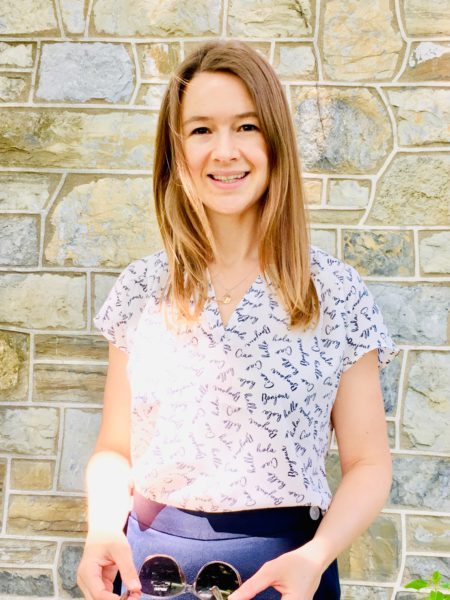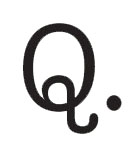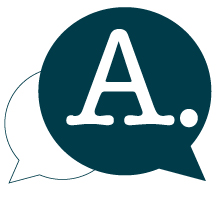A Conversation With Dr. Sarah Brooks
Learn why historical empathy can be an important learning outcome in the social studies classroom. Dr. Sarah Brooks of Millersville University describes her research on the teaching of historical empathy, discusses its importance in teaching social studies, and explains how it can be achievable in elementary and middle school classrooms.

Sarah Brooks is an associate professor in the Educational Foundations Department at Millersville University, Millersville, Pennsylvania. Her main focus is the preparation of secondary social studies teachers through coursework and supervised field experiences. In addition to this, Sarah coordinates the Secondary and K–12 Professional Development School, a partnership between Millersville University and several local school districts that prepares teachers in seven different content areas. Sarah also teaches educational research methodologies and supports the dissertation work of doctoral students.

Your research explores historical empathy in K–12 classrooms. What drew you to this topic?

My research on historical empathy began while I was teaching social studies to eighth grade students in Connecticut. I had a few years of teaching under my belt at that point. Having moved beyond some of the most pressing concerns of the new teacher, I started thinking a lot about what the purpose of social studies was for my students. Thanks to some excellent mentoring, I had become comfortable engaging my eighth graders in historical inquiry, and I felt good about the critical thinking skills these experiences were building. Yet historical empathy seemed to offer something more—a chance to build understanding and awareness that might assist students in interacting meaningfully with others throughout their lives.

What is historical empathy and why is it an important skill for educators to teach in history and social studies classrooms?

My colleague, Jason Endacott, and I have conceptualized historical empathy as “the process of students’ cognitive and affective engagement with historical figures to better understand and contextualize their lived experiences, decisions, or actions. Historical empathy involves understanding how people from the past thought, felt, made decisions, acted and faced consequences within a specific historical and social context” [Endacott & Brooks, 2013, p. 42]. Simply put, exercises in historical empathy engage students in the complex work of understanding another, often someone who is distant in time and place. The ability to understand others is foundational to an individual’s capacity to have meaningful relationships and participate effectively in their communities. There is considerable consensus that social studies should play a role in the preparation of citizens for effective participation in society. If this is indeed the ultimate goal of social studies, opportunities to cultivate historical empathy are critical to this effort.
Engagement in historical empathy also offers opportunities for self-awareness. Historical empathy necessitates considerable attention to the specific context in which a historical figure thought, felt, and acted. A potential by-product of this work is the realization that one’s own thoughts, feelings, and actions are very much contextual.

Historical empathy seems like a sophisticated academic skill. Is it achievable in elementary and middle school classrooms? What does it look like at those levels?

Historical empathy is complex, and it is possible in elementary and middle level classrooms, albeit with varying levels of sophistication. Research has demonstrated that eighth grade students can empathize with the experiences and actions of young women who chose to work in the Lowell mills in the early 1800s; fourth graders can empathize with diverse perspectives and experiences related to a specific time period or event, such as Nat Turner’s Rebellion or the First Battle of Bull Run.
Learning activities designed to promote historical empathy should give careful attention to background information about a historical situation or time period, often provided through textbooks, documentary film, statistics, and timelines. Additionally, primary source work is foundational to the development of historical empathy. Students can be asked to examine one or more carefully selected and sometimes adapted primary sources to explore the context, thoughts, perspectives, or actions of historical figures. Journal entries, letters, or speeches generated by a historical individual are often particularly relevant. Students can be invited to display historical empathy in myriad ways not limited to discussion, debate, and first- and third-person writing assignments. Finally, elementary and middle-level learners can be asked to reflect on how their understanding of the past might influence their own thoughts, emotions, and actions in the present.

In your 2013 article with Jason Endacott in Social Studies Research and Practice, you write: “Educators should make deliberate space for students to express their reactions to historical content, to make moral judgments, and to use these responses to motivate actions in the present.” Can you describe some practical ways that educators can incorporate reflection around historical empathy in their K–8 classrooms?

What Jason Endacott and I have suggested is that students should be encouraged to use the historical understanding they develop to see and act in their present world in a new way. Fortunately, I have had the opportunity to see social studies teachers and preservice teachers invite this kind of reflection. Recently, one of my teacher candidates taught a multiday lesson on the Indian Removal Act of 1830. He worked to build up students’ background knowledge of the contextual factors that encouraged a federal action of this kind. He then provided a collection of primary sources so students could examine the perspectives and experiences of those who were forcibly relocated. He also brought in a current news article that detailed the disproportionate impact of COVID-19 on Native Americans across the United States. He asked students to consider how historic actions might have consequences that can be seen in the present. He invited them to think about what actions might be taken in the present to address the problems they had just become aware of. Who could/ should take action? Why? This is just one example of the ways in which students can be trusted to use the understanding of the past to think and act in the present.

What advice would you give to educators who want to encourage the sort of reflection you describe but are concerned about teaching potentially polarizing events?

Inviting students to connect their historical understanding to present-day issues and events often means addressing topics that have been politicized and are potentially polarizing. I am sympathetic to the concerns this raises for social studies teachers, but I still implore them not to give up on this meaningful work. Exercises in historical empathy are on strong footing if they engage students with credible secondary sources and carefully selected primary sources. Discussions of contemporary issues require structure; spontaneous debates about current issues are fraught with risks. Teachers can structure discussions about contemporary issues by laying ground rules for how students will participate and interact with each other and by focusing the discussion on common sources of information. I have found the work of Paula McAvoy instructive when thinking about how to set up what could be contentious classroom discussions.

What is your favorite aspect of your work?

Most of my work explores what is possible in actual classroom settings. Social studies teachers work within numerous constraints, even more so as they teach through a global pandemic. I absolutely adore the time I get to spend chronicling and analyzing the ways in which exemplary teachers navigate their specific contexts and pursue meaningful goals for their students. Their efforts inspire me.

What do you hope to achieve with your research?

My hope is that my research can assist other educators—from the novice to the veteran—in expanding their conception of what is possible in their own classrooms. I hope that any or all of my scholarship might help social studies educators solidify their beliefs about the ultimate purpose of their instructional efforts and give them increased clarity about how this purpose might practically be achieved.

What are one or two projects you’re working on right now?

My more recent scholarship has shifted focus to teaching about religion in public school social studies classrooms. I’ve had the privilege of examining the ways in which skilled teachers seek to expand their students’ understanding of various world religions and the ways in which humans have enacted and continue to enact these traditions. Most recently, I was able to travel with world history students to several sacred spaces in their local community and interview them about how this experience shaped their understanding of different world religions. This work is certainly connected to my earlier research as I am now examining how students display empathy by recognizing the perspectives and experiences of religious adherents.

Have any recent findings in your work been unexpected or surprising to you?

I don’t think surprised is the right word, but I continue to be amazed by the bravery of social studies teachers who are determined to engage students in meaningful learning. My research has allowed me to spend hours in the classroom of one world history teacher who is open about his Muslim faith when teaching about Islam as part of his unit on the Abrahamic religions. He is aware that his majority Christian students likely have not had the opportunity to interact with a Muslim, so he invites any questions they might have for him to promote their understanding of Islam. Another study has allowed me to examine the work of another world history teacher who takes her students on a field trip to five or more houses of worship in their community so they can learn about different religious traditions by interacting with artifacts, spaces, and adherents. This teacher persists in this work despite logistical constraints and the sometimes challenging work of convincing students, their parents, and school administration that this experience is valuable.

You can find more information and background on this conversation and on Dr. Brooks’s research in the following.
Brooks, S. (2009). Historical empathy in the social studies classroom: A review of the literature. Journal of Social Studies Research, 33(2), 213–234.
Endacott, J., & Brooks, S. (2013). An updated theoretical and practical model for promoting historical empathy. Social Studies Research and Practice, 8(1), 41–58.
Endacott, J., & Brooks, S. (2018). Historical empathy: Perspectives and responding to the past. In S. A. Metzger & L. M. Harris (Eds.), The Wiley International Handbook of History Teaching and Learning (pp. 203– 225). Wiley.
